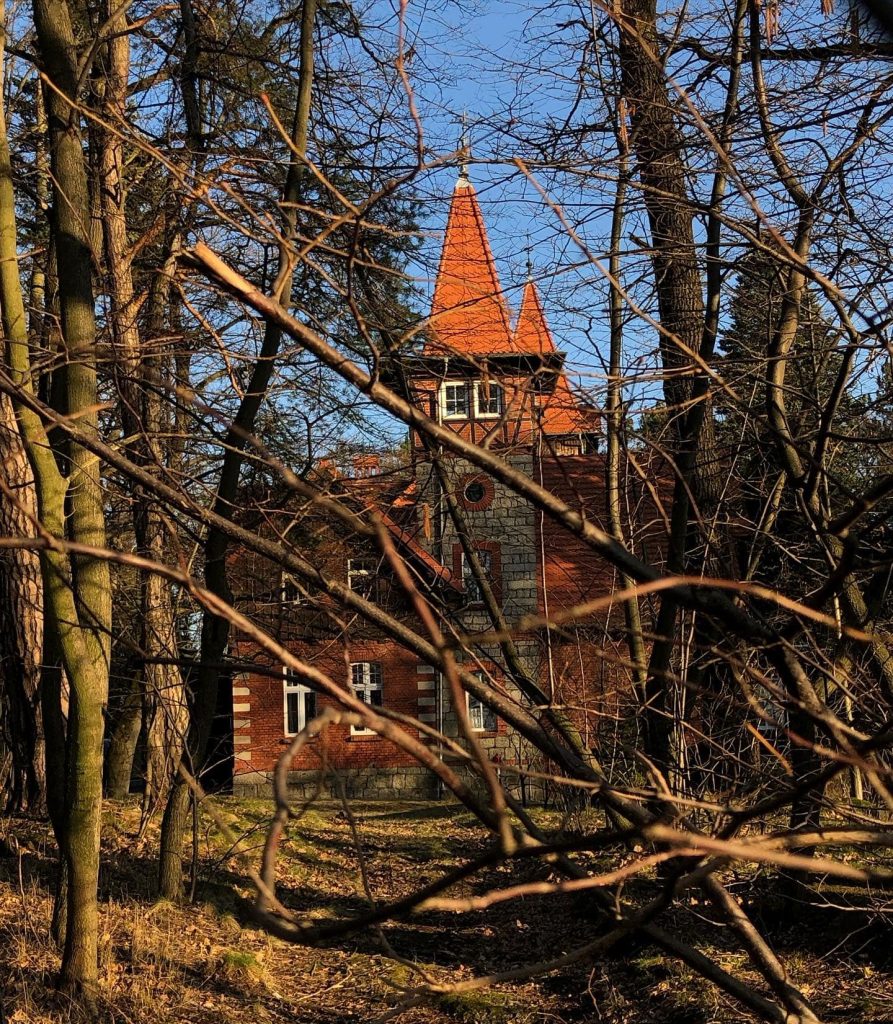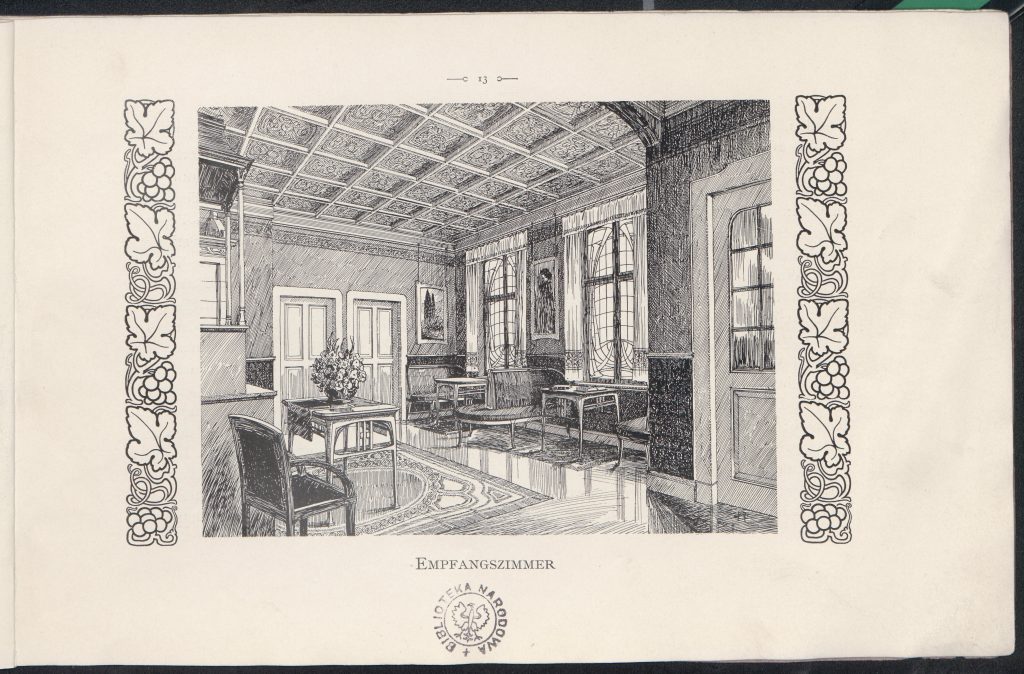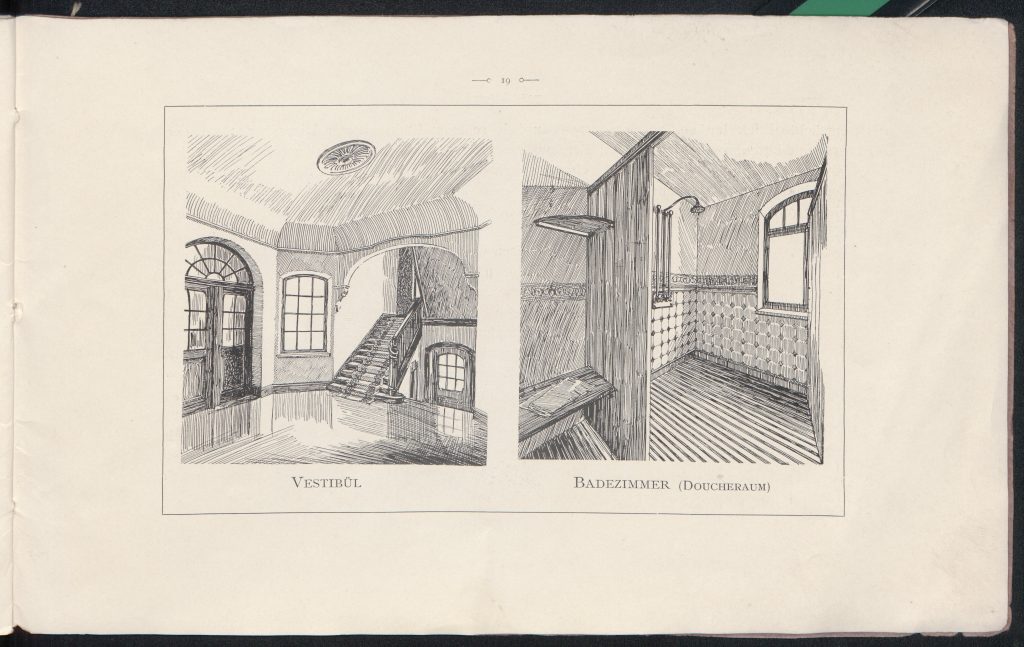
Dąbrówka Children’s Home in Cieplice Śląskie-Zdrój / Photo by Marta Maćkowiak
At the end of the 19th century, the brothers Georg and Artur Barasch purchased a building with a restaurant and an English garden located on a hill known as Weinberg (Wine Mountain), now at ul. Podgórzyńska 6. In 1879, the hill belonged to Beata Oertel. Her daughter, Paulina Fuchs, sold the land to Mr. Kums, who constructed the aforementioned building, opened a restaurant named Offaschänke, and established the English garden. Later, the entire property was to be leased to a waiter named Schmidt, and at the end of the 19th century, it was sold to the Barasch brothers, the owners of the Warenhaus Gebrüder Barash department store in Breslau (currently: the Feniks department store in Wrocław).
The Barasch brothers carried out extensive renovations and established a holiday home for their employees, naming it Baraschheim.
Georg and Artur were born into a Jewish family in Ścinawa (Steinau an der Oder). Their first joint and successful business venture was the sale of Baratol shoe polish in their hometown. Their success encouraged them to expand their activities, and in 1896, they opened a store in Wrocław (Breslau). In 1904, they built the Warenhaus Gebrüder Barash department store (currently still existing under the changed name, as Feniks department store), and before World War I, they already had a network of department stores throughout Germany.

Georg and Arthur Barasch/ source: Erholungsheim Barasch bei Warmbrunn im Riesengebirge. (Polona)
What was the stay at Baraschheim like?
The employees of Artur and Georg could use the resort free of charge from May to September, and the possible duration of their stay depended on the length of their employment – anything from 5 days to 4 weeks. Round-trip transportation and meals were also covered by the Barasch brothers.
Artur’s son, Werner Barasch, recalls: ‘Dad bought a sanatorium in the mountains, in Cieplice Śląskie-Zdrój, where all the employees of the Barasch department store could enjoy all the amenities and free meals during their annual leave. It was an exceptional addition to their salary. Dad was proud that he could offer this to them.’





Interiors of Baraschheim / source: Erholungsheim Barasch bei Warmbrunn im Riesengebirge. (Polona)
Around 1920, the Barasch estate was purchased by Eugen Füllner, the owner of a paper machine factory in Cieplice (Bad Warmbrunn). In 1930, it was acquired by Friedrich Grössler, who renamed the holiday home to Eichenhof. In 1934, the building briefly became a sports school, and from 1935, it served as a military garrison. The complex was also called Das Deutsche Heim for some time.
After the Nazis came to power, Georg Barasch fled to Switzerland with his wife and son, later they moved to Ecuador. Artur died in Auschwitz on November 6, 1942, but fortunately, his wife and son managed to survive the war. In the following years, a Stolperstein (memorial stone) was placed in front of their villa, at Wissmannstrasse 11 in Berlin. Descendants of the Barasch brothers live in the United States and South America.
Between 1945 and 1961, the building served as a holiday home for the Polish Teachers’ Union. Presently, since 1961, the building functions as the Dąbrówka Children’s Home.
Sources:
Końcowy raport składa się z kopi odnalezionych dokumentów, tłumaczeń, zdjęć oraz podsumowania. Wyjaśniam pokrewieństwo odnalezionych osób, opisuję sprawdzone źródła i kontekst historyczny. Najczęściej poszukiwania dzielone są na parę etapów i opisuję możliwości kontynuacji.
Czasem konkretny dokument może zostać nie odnaleziony z różnych przyczyn – migracji do innych wiosek/miast w dalszych pokoleniach, ochrzczenia w innej parafii, lukach w księgach, zniszczeń dokumentów w pożarach lub w czasie wojen. Cena końcowa w takiej sytuacji nie ulega zmienia, ponieważ wysiłek włożony w poszukiwania jest taki sam bez względu na rezultat.
Raporty mogą się od siebie mniej lub bardziej różnić w zależności od miejsca, z którego rodzina pochodziła (np. dokumenty z zaboru pruskiego, austriackiego i rosyjskiego różnią się od siebie formą i treścią).
Na podstawie zebranych informacji (Twoich i moich) przygotuję plan i wycenę – jeśli ją zaakceptujesz, po otrzymaniu zaliczki rozpoczynam pracę i informuję o przewidywanym czasie ukończenia usługi. Standardowe poszukiwania trwają około 1 miesiąca, a o wszelkich zmianach będę informować Cię na bieżąco.
Na Twoje zapytanie odpiszę w ciągu 3 dni roboczych i jest to etap bezpłatny. Być może zadam parę dodatkowych pytań, dopytam o cele albo od razu przedstawię propozycję kolejnych kroków.
Warto pamiętać, że im więcej szczegółów podasz, tym więcej rzeczy mogę odkryć.
Podziel się ze mną:
I najważniejsze – jeśli masz niewiele informacji, zupełnie się tym nie martw, w takich sytuacjach także znajdę rozwiązanie.